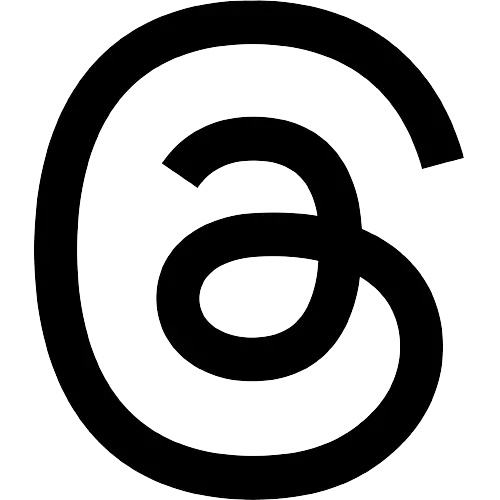A day to go! Chandrayaan-3 to make history with soft-landing on Moon's surface
The LM comprising the lander (Vikram) and the rover (Pragyan), is scheduled to make a touch down near the south polar region of the Moon at 6:04 pm on Wednesday.

Chandrayaan 3 to land on Moon on August 23 (Photo credit: X/@ISRO)
BENGALURU: ISRO's ambitious third Moon mission Chandrayaan-3's Lander Module (LM) is all set to land on the lunar surface on Wednesday evening, as India eyes to become the first country to reach the uncharted south pole of Earth's only natural satellite.
The LM comprising the lander (Vikram) and the rover (Pragyan), is scheduled to make a touch down near the south polar region of the Moon at 6:04 pm on Wednesday.
If the Chandrayaan-3 mission succeeds in making a touchdown on moon and in landing a robotic lunar rover in ISRO's second attempt in four years, India will become the fourth country to master the technology of soft-landing on the lunar surface after the US, China and the erstwhile Soviet Union.
Chandrayaan-3 is a follow-on mission to Chandrayaan-2 and its objectives are to demonstrate safe and soft-landing on the lunar surface, roving on the Moon, and to conduct in-situ scientific experiments.
Chandrayaan-2 had failed in its lunar phase when its lander 'Vikram' crashed into the surface of the Moon following anomalies in the braking system in the lander while attempting a touch down on September 7, 2019. Chandrayaan's maiden mission was in 2008.
The Rs 600 crore Chandrayaan-3 mission was launched on July 14 onboard Launch Vehicle Mark-III (LVM-3) rocket, for a 41-day voyage to reach near the lunar south pole.
The soft-landing is being attempted days after Russia's Luna-25 spacecraft crashed into the Moon after spinning out of control.
After the second and final deboosting operation on August 20, the LM is placed in a 25 km x 134 km orbit around the Moon.
The module would undergo internal checks and await the sunrise at the designated landing site, ISRO has said, adding that the powered descent -- to achieve soft-landing on the Moon's surface -- is expected to be initiated at around 5:45 pm on Wednesday.
A day before the scheduled touch-down, ISRO on Tuesday confirmed that the Chandrayaan-3 mission is on schedule.
The space agency said the Mission Operations Complex (MOX), located at the ISRO Telemetry, Tracking and Command Network (ISTRAC) here, is buzzing with energy and excitement.
"The mission is on schedule. Systems are undergoing regular checks. Smooth sailing is continuing," ISRO said in an update this afternoon, adding that the live telecast of the landing operations at MOX/ISTRAC begins at 5:20 pm on Wednesday.
ISRO's Space Applications Centre Director Nilesh Desai said, "If any health parameter (of the lander module) is found abnormal on August 23, then we will delay the landing by four days to August 27." .
ISRO on Tuesday also released images of the Moon as captured by the Lander Position Detection Camera (LPDC) of the Chandrayaan-3 mission on August 19, and by Lander Imager Camera 4 on August 20.
LPDC images assist the LM in determining its position (latitude and longitude) by matching them against an onboard moon reference map, according to the Bengaluru-headquartered national space agency.
The critical process of soft-landing has been dubbed by many including ISRO officials as "17 minutes of terror", with the entire process being autonomous when the lander has to fire its engines at the right times and altitudes, use the right amount of fuel, and scan of the lunar surface for any obstacles or hills or craters before finally touching down.
After checking all the parameters and deciding to land, ISRO will upload all the required commands from its Indian Deep Space Network (IDSN) at Byalalu near here, to the LM, a couple of hours before the scheduled time touchdown.
According to ISRO officials, for landing, at around 30 km altitude, the lander enters the powered braking phase, and begins to use its four thruster engines by "retro firing" them to reach the surface of the moon, by gradually reducing the speed. This is to ensure the lander doesn't crash, as the Moon's gravity will also be in play.
Noting that on reaching an altitude of around 6.8 km, only two engines will be used, shutting down the other two, aimed at giving the reverse thrust to the lander as it descends further, they said, then, on reaching an altitude of about 150-100 metres, the lander using its sensors and cameras, would scan the surface to check whether there are any obstacles and then start descending to make a soft-landing.
ISRO Chairman S Somanath had recently said the most critical part of the landing will be the process of reducing the velocity of the lander from 30 km height to the final landing, and the ability to reorient the spacecraft from horizontal to vertical direction. "This is the trick we have to play here," he said.
"The velocity at the starting of the landing process is almost 1.68 km per second, but (at) this speed (the lander) is horizontal to the surface of the Moon. The Chandrayaan-3 here is tilted almost 90 degrees, it has to become vertical. So, this whole process of turning from horizontal to vertical is a very interesting calculation mathematically. We have done a lot of simulations. It is here where we had the problem last time (Chandrayaan-2)," Somanath explained.
After the soft-landing, the rover will descend from the lander's belly, onto the Moon's surface, using one of its side panels, which will act as a ramp.
The lander and rover will have a mission life of one lunar day (about 14 earth days) to study the surroundings there. However, ISRO officials do not rule out the possibility of them coming to life for another lunar day.
The lander will have the capability to soft-land at a specified lunar site and deploy the rover which will carry out in-situ chemical analysis of the lunar surface during the course of its mobility. The lander and the rover have scientific payloads to carry out experiments on the lunar surface.
"After powered descent on to the landing site, there will be deployment of ramp and rover coming out. After this all the experiments will take place one after the other -- all of which have to be completed in just one day on the moon, which is 14 days," Somnath had said.
Noting that as long as the sun shines all the systems will have its power, he said, "the moment the sun sets, everything will be in pitch darkness, temperature will go as down as low as minus 180 degree celsius; so it is not possible for the systems to survive, and if it survives further, then we should be happy that once again it has come to life and we will be able to work on the system once again, and we hope like that to happen.".
Polar regions of the moon are a very different terrain due to the environment and the difficulties they present and therefore have remained unexplored. All the previous spacecraft to have reached the Moon landed in the equatorial region, a few degrees latitude north or south of the lunar equator.
The Moon's south pole region is also being explored because there could be a possibility of presence of water in permanently shadowed areas around it.
The LM has payloads including RAMBHA-LP which is to measure the near surface plasma ions and electrons density and its changes, ChaSTE Chandra's Surface Thermo Physical Experiment -- to carry out the measurements of thermal properties of lunar surface near polar region-- and ILSA (Instrument for Lunar Seismic Activity) to measure seismicity around the landing site and delineating the structure of the lunar crust and mantle.
The rover, after the soft-landing, would ramp down of the lander module and study the surface of the moon through its payloads APXS - Alpha Particle X-Ray Spectrometer - to derive the chemical composition and infer mineralogical composition to further enhance understanding of the lunar surface.
The rover also has another payload Laser Induced Breakdown Spectroscope (LIBS) to determine the elemental composition of lunar soil and rocks around the lunar landing site.
Ahead of its scheduled landing on the moon, Chandrayaan-3's LM has established a two-way communication with Chandrayaan-2's orbiter which continues to orbit around the Moon. The two-way contact potentially offers ground controllers (MOX-Mission Operations Complex in Bengaluru) more channels for communication with Chandrayaan-3.
The Chandrayaan-2 spacecraft comprising orbiter, lander and rover was launched in 2019. The lander with a rover inside crashed into the moon's surface, failing in its mission to achieve a soft-landing. The ISRO had said that due to the precise launch and orbital manoeuvres, the mission life of the Ch-2 orbiter, which had separated from the lander and rover, is increased to seven years.
Somanath has said instead of a success-based design in Chandrayaan-2, the space agency opted for a failure-based design in Chandrayaan-3, focused on what all can fail and how to protect it and ensure a successful landing.
"We looked at very many failures – sensor failure, engine failure, algorithm failure, calculation failure. So, whatever the failure we want it to land at the required speed and rate. So, there are different failure scenarios calculated and programmed inside." .
Former ISRO chairman K Sivan, who headed the space agency during the second lunar mission said, Chandrayaan-3 is going with more "ruggedness" than the Chandrayaan-2.
"Chandrayaan-3, based on the lessons we learned from Chandrayaan-2, a lot of modifications have been incorporated in the area of the thruster, guidance system and control system. Also wherever the design margins are less, margins have been enhanced. Another change was done -- wherever possible the redundancies have been put in," he said.
The LM of Chandrayaan-3 had successfully separated from the Propulsion Module on August 17, which was 35 days after the satellite was launched on July 14.
Meanwhile, the Propulsion Module, whose main function was to carry the Lander Module from launch vehicle injection till lander separation orbit, will continue its journey in the current orbit for months/years, the space agency said.
Apart from this, the Propulsion Module also has one scientific payload as a value addition. The SHAPE (Spectro-polarimetry of Habitable Planet Earth) payload onboard it, whose future discoveries of smaller planets in reflected light would allow us to probe into a variety of Exo-planets which would qualify for habitability (or for presence of life).
Post its launch on July 14, Chandrayaan-3 entered into the lunar orbit on August 5, following which orbit reduction manoeuvres were carried out on the satellite on August 6, 9, 14 and 16, ahead of separation of both its modules on August 17, in the run-up to the landing on August 23.
Earlier, over five moves in the three weeks since the July 14 launch, ISRO had lifted the Chandrayaan-3 spacecraft into orbits farther and farther away from the Earth.
Then, on August 1 in a key manoeuvre -- a slingshot move -- the spacecraft was sent successfully towards the Moon from Earth's orbit. Following this trans-lunar injection, the Chandrayaan-3 spacecraft escaped from orbiting the Earth and began following a path that would take it to the vicinity of the moon.



